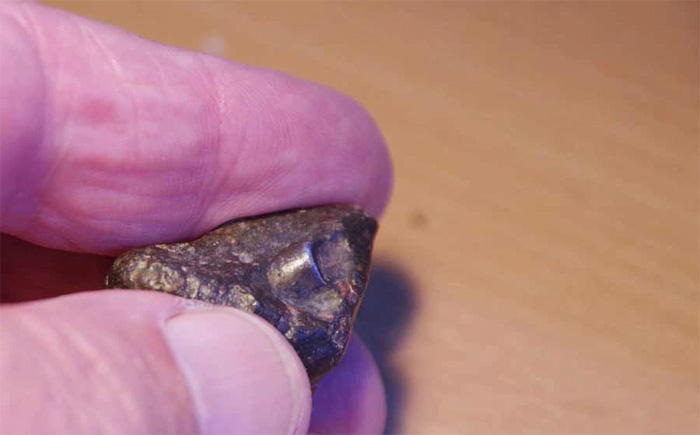On April 17, 2020, David Bryant, a meteorite dealer, received an item from a regular customer. It is called NWA 869. However, this meteorite was unlike any specimen David had encountered before.
Regarding the origins of meteorites, we can summarize as follows:
The Solar System condensed from a cloud of dust and gas known as the solar nebula about five billion years ago. The first solid materials were spherical objects called chondrules. They bonded together over several million years to form increasingly larger bodies. Over time, planets formed. Approximately 4.5 billion years ago, eight large planets and other celestial bodies made up the Solar System.
The gaps between the orbits of the eight major planets are filled with leftover debris from the early days. Additionally, an area between Mars and Jupiter contains thousands of smaller celestial bodies known as asteroids. These occasionally collide and launch additional rock and metal fragments into the Solar System.
If one of these fragments collides with Earth, it heats up to over 6,000 degrees Celsius due to friction with the atmosphere. This is the cause of the familiar shooting stars or meteorites we can see at night. If the meteorite is large enough, it may remain on the surface of the Earth.
The meteorite in question is NWA 869. It comes from a large field and is the 869th meteorite discovered in Northwest Africa.
While David was processing NWA 869, he suddenly noticed a metallic shine. What makes it special is that the glowing object is a small cylinder approximately 6 mm in diameter. It was subsequently sent to the University of East Anglia for microscopy and spectroscopic analysis.
Preliminary results indicate that the silver cylindrical object is composed of a special mineral not previously identified.
Since the meteorite itself formed hundreds of millions of years before the planets, scholars have raised the question: Who created it, and where did it originate before becoming part of the solar nebula?

Meteorite NWA 869. (Image: David Bryant)
The most supported hypothesis suggests that this meteorite may have originated from a planet orbiting a Population II star that exploded several billion years before our Solar System formed. Since the oldest stars formed about 10 billion years ago—twice as old as the Sun—it is quite possible that a civilization existed that we are yet unaware of.
From this basis, scientists believe that it is very likely that life has existed in the universe. The NWA 869 meteorite may be one of the remaining remnants.
This further reinforces the viewpoint that we may find signs of extraterrestrial life in the future. However, this is only a preliminary hypothesis, and experts still need to work and research further to draw accurate conclusions.


















































